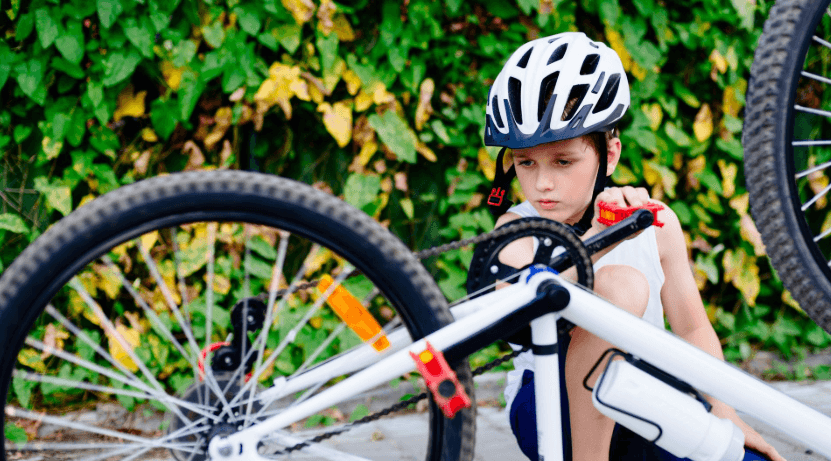Pickleball, the fast-paced paddle sport that combines elements of tennis, badminton, and table tennis, has taken the sports world by storm. Its appeal lies in its accessibility and thrilling gameplay, attracting players of all ages and skill levels. As with any sport, having the right equipment is essential for enhancing performance, and in pickleball, the paddle is a player’s most crucial tool. Among the various factors that contribute to a successful pickleball game, the grip size of the paddle often goes unnoticed, yet it can significantly impact a player’s comfort, control, and overall performance on the court.
Understanding Pickleball Paddle Grip Size
The grip size of a pickleball paddle refers to the circumference of the handle. It might seem like a minor detail, but it plays a pivotal role in determining how a player interacts with the paddle and, subsequently, the ball. The grip size affects various aspects of gameplay, including comfort, control, and shot execution. It is, therefore, essential to delve into the nuances of grip size and its impact on your pickleball experience.

Factors to Consider
Hand Size and Player Comfort
One of the primary considerations when selecting the ideal grip size is the player’s hand size. Players with larger hands might find smaller grip sizes uncomfortable, leading to potential strain during extended gameplay. Conversely, players with smaller hands might struggle with larger grips, impacting their ability to handle the paddle efficiently. Comfort is paramount in any sport, and having a grip size that aligns with your hand size can make a significant difference in your enjoyment and performance on the court. For a deeper understanding, explore this resource https://niupipo.com/products/pickleball-paddles-set-of-4-mx-24-fiberglass.
Control and Maneuverability
Grip size also has a direct influence on the level of control and maneuverability a player has over the paddle. A grip that is too small may lead to difficulty in controlling shots, particularly during fast-paced rallies or precision shots. On the other hand, a grip that is too large might hinder quick maneuvering and reaction times. Different playing styles require different levels of control and maneuverability, making grip size a crucial consideration when tailoring your paddle to your unique style of play.
Power and Shot Execution
The relationship between grip size and power generation is another critical aspect to explore. A grip that is too small may limit the player’s ability to generate power behind their shots, impacting the speed and effectiveness of their serves and smashes. Conversely, a grip that is too large might lead to a lack of finesse in shot execution, affecting accuracy and placement. Striking the right balance between grip size and power potential is vital for delivering impactful shots while maintaining precision.
Determining Your Ideal Grip Size
The “Rule of Thumb” Method
A common approach to measuring grip size is the “Rule of Thumb” method. To determine your ideal grip size using this method, hold the pickleball paddle in your playing hand as you would during a game. Slide your index finger between the tips of your fingers and the base of your palm. If you can comfortably fit your finger in the gap, the grip size is likely appropriate for your hand size. While this method provides a general guideline, it’s important to consider individual preferences and comfort levels.
Testing Different Grip Sizes
Experimenting with different grip sizes is a valuable way to find the perfect fit for your playing style. Local sports stores or pickleball paddle demos often provide opportunities to try out various paddle sizes. Take advantage of these options to gain firsthand experience with different grips and assess how each one feels during gameplay. Pay attention to how each grip size influences your comfort, control, and shot execution, and use this information to make an informed decision.
Seeking Professional Advice
For those seeking personalized guidance, consulting pickleball instructors or experienced players can offer valuable insights. These experts can analyze your playing style, strengths, and areas for improvement to recommend a grip size that complements your skills. Their expertise can save you time and effort in finding the optimal grip size, allowing you to focus on refining your gameplay.
Adapting to a New Grip Size
Tips for Transitioning
Transitioning to a different grip size might initially present challenges, as your muscle memory and playing habits are accustomed to your previous paddle. Give yourself time to adjust and be patient with the process. Gradually incorporating the new grip size into your practice sessions can help ease the transition and improve your comfort and control over time.
Incorporating Grip Size into Gameplay Strategy
As you become accustomed to your new grip size, consider how it aligns with your overall gameplay strategy. Different grip sizes can enhance specific shots and techniques. Experiment with various grip adjustments to determine how they impact spin, placement, and power. By incorporating grip size as a strategic element, you can elevate your gameplay and adapt to different situations more effectively.
Maintaining and Refining Your Grip
Regularly Evaluating Comfort and Performance
Pickleball is a dynamic sport that requires continuous assessment and adaptation. Regularly evaluate how your chosen grip size is affecting your comfort and performance on the court. Pay attention to any signs of discomfort, such as hand fatigue or strain, as they might indicate the need for further adjustments.
Fine-Tuning Grip Techniques
As you become more attuned to your grip size, focus on refining your grip techniques. Explore how subtle adjustments can influence the outcome of your shots. Experiment with grip variations for different types of serves, volleys, and smashes, and observe how these changes impact your game. Mastery of grip techniques can lead to more precise and controlled shot execution.
Conclusion
In the world of pickleball, every detail matters when it comes to perfecting your game. The grip size of your paddle may seem like a small consideration, but its impact on comfort, control, and shot execution is undeniable. By understanding the factors that influence grip size selection, testing different options, and seeking expert advice when needed, you can fine-tune your pickleball experience and elevate your performance on the court. Remember, finding the ideal grip size is a journey that requires patience and experimentation, but the rewards in terms of improved gameplay and enjoyment are well worth the effort.




